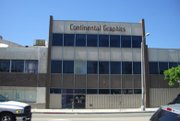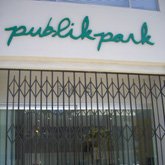La Brea Closes Five Stores in Four Months
Compared to many fashion streets, Los Angeles’ La Brea Avenue has been particularly hard hit by the weak economy. Retailers are wondering if the street can recapture its former potential.
Since November 2007, five La Brea fashion boutiques have gone out of business. They were part of a recent wave of stores that opened in hopes of transforming the area into Los Angeles’ latest fashion street.
While La Brea is still noted as the address for some of the city’s high-profile fashion retailers—American Rag is a longtime pioneer of Los Angeles style, and The Way We Wore is a celebrated high-end vintage boutique—the street had yet to evolve into a full-fledged fashion street. Rather, it merely hosted small pockets of fashion retail.
However, the handful of highly successful stores on La Brea made it look like a great place to open a boutique, Michelle Dalton Tyree said. She was one entrepreneur who opened a boutique on La Brea, in February 2005. “It was an exciting time for retail in Los Angeles,” said Tyree, who owned and managed La Brea boutique Iconology. “Everyone saw a lot of opportunities.” Tyree closed her store in November 2007.
Since 2005, more than seven fashion boutiques opened on La Brea. But Iconology, Publik Park, Lily Savitch and Sugar On La Brea shuttered their doors in the past five months during what should have been the boom time of the holiday season. La Brea veteran boutique Yellow went out of business during the same time.
The remaining La Brea retailers offered several reasons for these stores’ failure. Some said it is the weak economy. Others said the street was not built for fashion retail. Another reason could have been lack of experience—nearly all the shuttered boutiques were owned by first-time entrepreneurs.
Other La Brea watchers believe that the closings are nothing but a sad chapter in the history of the street. And many are confident that La Brea will eventually blossom with retail. New developments
One project many La Brea retailers are anticipating is the untitled development housed in the former Continental Graphics complex on the corner of La Brea and First Street.
The 130,000-square-foot project will house retail and residential lofts. A representative for developer Bomel Companies said the project is going through the entitlement process with the city of Los Angeles. There is no scheduled date for construction to begin.
Perhaps Continental Graphics’ project will eventually provide an anchor for the sprawling street. However, a slowing economy, street-parking enforcement and the lack of an anchor proved too much for some of La Brea’s fledgling entrepreneurs.
Indeed, the economy has been taking a toll on retail sales nationwide. According to the New York–based International Council of Shopping Centers, the 2007 holiday retail season was the weakest since 2002, and retail sales only increased 0.9 percent for the month of December.
La Brea’s boutique owners also had to contend with the five-month 2007 Hollywood writers’ strike, which dealt a big blow to businesses catering to film- and TV-industry people.
The macroeconomic problems alone could scuttle a business, said Kelly Peterson, co-owner of Beige, a fashion boutique on Beverly Boulevard, a few blocks west of La Brea.
“If you have one bad season, it could throw you off track. Small boutiques are going to suffer worse than others,” said Peterson, who is currently revamping her veteran boutique to include footwear and vintage fashions.
Plus, La Brea is not a street where shoppers can easily browse. It is one of Los Angeles’ major thoroughfares, and it can be almost as busy as a freeway, many boutique owners complain. There also is no parking on the street between 4 and 7 p.m., which is often prime shopping time.
The street’s heavy car traffic and lack of pedestrians almost force businesses into relying on destination shopping, or when consumers make it a point to patronize a specific place, Gabrielle Zuccaro said. She is the owner of Bleu, a fashion boutique that has been on La Brea since 1998.
“Business on this street has worked because [the surviving stores] dominated a certain niche. Everyone offers something totally different,” she said. American Rag offers a unique view of Los Angeles fashion, mixing vintage looks and new designers. J. Ransom offers premium menswear looks. Bleu concentrates on designers. Branded stores for labels Stuuml;ssy and Volcom offer new streetwear and skate looks.
Many of Los Angeles’ most-successful fashion streets, such as Robertson Boulevard, are smaller and easier for pedestrians to navigate, said Matthew May, president of Encino, Calif.–based May Realty Advisors, which specializes in commercial real estate. Rents on La Brea typically range from $2.50 to more than $4. A square foot of real estate on the premier retail strip of Robertson costs $25, according to May Realty Advisors.
La Brea retailers also struggle to get on consumers’ radar screens, Tyree said. “We heard all the time, ’I wish you had a location on the Westside because I don’t come out here very much,” Tyree recalled.
If La Brea has an anchor, it is American Rag. And according to owner Mark Werts, the street is just fine. Consumers will go to the stores with the best merchandise, no matter the location, he said. “It’s all about how good you are,” he said.
La Brea is still attractive for non-retail fashion businesses. Los Angeles–based premium label Kings of Glory will open its headquarters and a showroom at 1182 S. La Brea Ave., possibly in May, according to Kings of Glory designer Ido Gondelman.
Despite rough economic times, boutiques continue to open in Los Angeles. In the past month, menswear label Steve Alan open on Robertson Boulevard, DCMA Collective opened near Melrose Avenue and Nanette Lepore opened on Melrose Avenue.
























